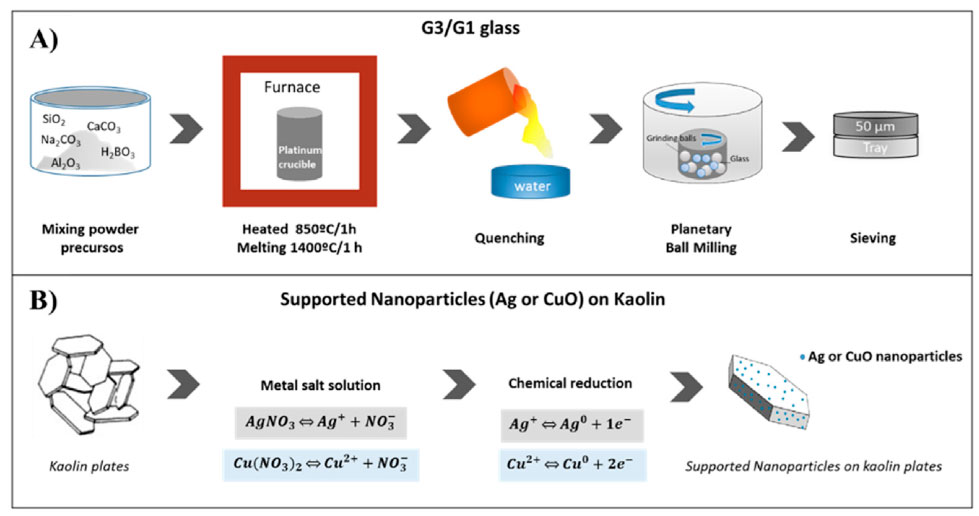Se trata de un vidrio sodocálcico y de la arcilla caolín, que contienen nanopartículas capaces de reducir la infectividad viral más del 99% en 10 minutos de contacto. Un estudio de investigadores españoles ha identificado un tipo de vidrio y una arcilla que tienen una potente actividad viricida. Se trata de materiales inorgánicos de bajo coste que pueden servir para descontaminar superficies, líquidos y aires que contengan partículas virales. Estos dos materiales reducen la infectividad viral más del 99% en 10 minutos de contacto y han sido probados con los virus de la covid-19, de la gripe, del herpes simple y con adenovirus. También son eficaces contra bacterias y hongos. Estos materiales podrían ser utilizados como eficaces desinfectantes antivirales y en el futuro podrían servir para desarrollar medicamentos antivirales con baja o nula toxicidad.
Inorganic materials can provide a set of tools to decontaminate solid, liquid or air containing viral particles. The use of disinfectants can be limited or not practical in scenarios where continuous cleaning is not feasible. Physicochemical differences between viruses raise the need for effective formulations for all kind of viruses. In the present work we describe two types of antimicrobial inorganic materials: i) a novel soda-lime glass (G3), and ii) kaolin containing metals nanoparticles (Ag or CuO), as materials to disable virus infectivity. Strong antiviral properties can be observed in G3 glass, and kaolin-containing nanoparticle materials showing a reduction of viral infectivity close to 99% in the first 10 min of contact of vesicular stomatitis virus (VSV). A potent virucidal activity is also present in G3 and kaolin containing Ag or CuO nanoparticles against all kinds of viruses tested, reducing more than 99% the amount of HSV-1, Adenovirus, VSV, Influenza virus and SARS-CoV-2 exposed to them. Virucidal properties could be explained by a direct interaction of materials with viruses as well as inactivation by the presence of virucidal elements in the material lixiviates. Kaolin-based materials guarantee a controlled release of active nanoparticles with antiviral activity. Current coronavirus crisis highlights the need for new strategies to remove viruses from contaminated areas. We propose these low-cost inorganic materials as useful disinfecting antivirals in the actual or future pandemic threats.
Fuente: https://www.sciencedirect.com


